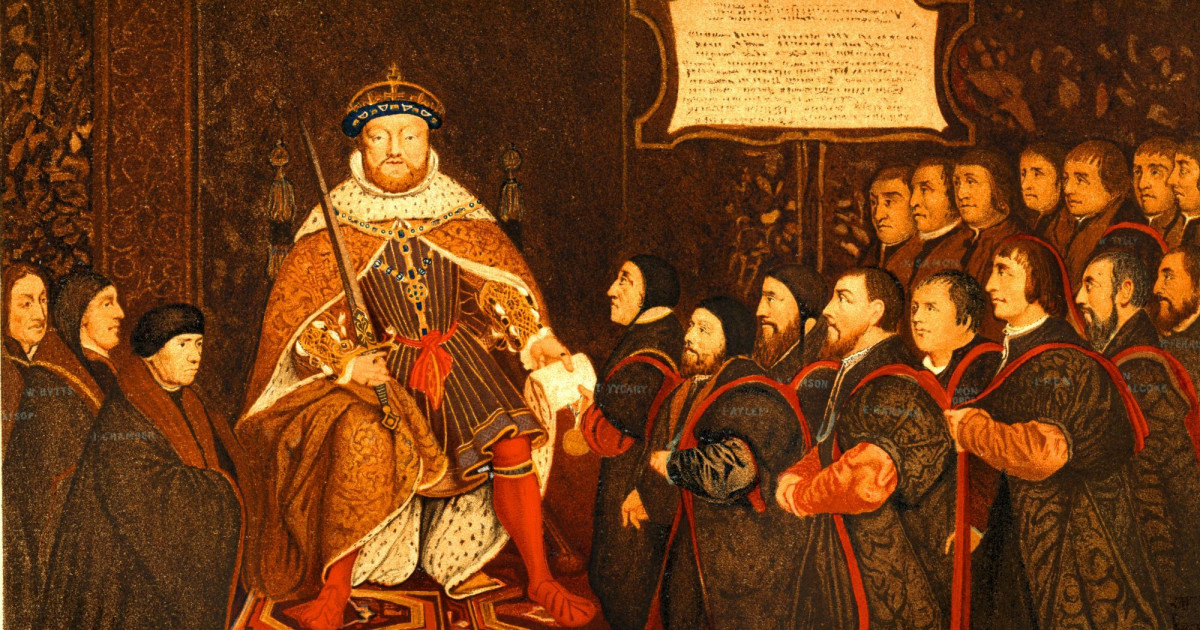DNA analysis reveals that King Henry VIII may have suffered from rare genetic disorders, shedding new light on his notorious behavior and tragic reign.

In a revelation that could rewrite history, groundbreaking DNA research has unearthed startling evidence about the notorious King Henry VIII, suggesting that the monarch’s infamous madness and tragic reign may have been rooted in two rare genetic disorders.
For centuries, historians have speculated about the causes of his violent temper and the untimely deaths of his heirs, but modern science now points to a hidden curse lurking within his bloodline.
Henry VIII, who ascended to the throne at just 17 years old, was initially celebrated as a golden prince destined to lead England into an era of prosperity.
With his striking red hair, athletic build, and charismatic personality, he captivated the nation. However, beneath this charming facade lay a dark and silent enemy—genetic disorders that would ultimately contribute to his downfall.
The first disorder, identified as the Kell positive blood antigen, has been linked to a tragic pattern of miscarriages and stillbirths that plagued Henry’s marriages.
This antigen, when inherited by children from a Kell positive father and a Kell negative mother, can trigger the mother’s immune system to attack the fetus, leading to devastating loss.

Henry’s first wife, Catherine of Aragon, suffered multiple miscarriages, while Anne Boleyn faced similar heartbreak after giving birth to a daughter, Elizabeth, but losing subsequent pregnancies, including a male child shortly after Henry’s catastrophic jousting accident.
The second disorder, known as Mloud syndrome, is believed to have wreaked havoc on Henry’s mental and physical health. This rare genetic condition, passed through the X chromosome, manifests with symptoms that include muscle weakness, mood swings, and cognitive decline.
Following his jousting accident in 1536, when he was thrown from his horse and suffered severe injuries, Henry’s behavior began to change dramatically.
Once a vibrant ruler, he became increasingly paranoid, cruel, and untrusting, leading to the execution of those closest to him, including Anne Boleyn and his loyal adviser, Thomas More.
As Henry’s physical condition deteriorated, so did his mental state. The once-great king, who had charmed Europe with his intellect and athleticism, became a shadow of his former self.
His body swelled to nearly 400 pounds, plagued by painful leg ulcers and infections that left him bedridden and unable to rule effectively. The opulence of his court masked his suffering, but whispers of his cruelty and madness spread like wildfire.

Historians previously attributed Henry’s tyrannical behavior to power and pride, but the new findings suggest a more tragic narrative.
His violent outbursts and irrational decisions may have stemmed from the debilitating effects of his genetic conditions, which manifested as a series of personal and national tragedies.
Each miscarriage and failed pregnancy deepened his despair, transforming him into a ruler driven by fear and rage.
The implications of these discoveries are profound. They challenge the long-held perceptions of Henry as merely a tyrant who ruthlessly pursued power and legacy at any cost. Instead, they paint a picture of a man ensnared by the very blood that granted him his royal status.
His story is not just one of glory and downfall but of a tragic battle against invisible foes within his own body.
As the end of his life approached, Henry’s condition worsened. Confined to his bed, he was tormented by pain and isolation, surrounded by a court that had once celebrated him. His paranoia intensified, leading him to distrust even his own daughters, Mary and Elizabeth.
The empire he had built on fear now trembled at the sight of his weakness, and the vibrant court became a place of dread and silence.
Henry VIII’s death in January 1547 marked the end of an era, but the legacy of his hidden curse continued to echo through history.
His children, particularly Mary and Elizabeth, would rise to power, each shaped by the tumultuous legacy of their father. Yet, the question remains: how could a man so powerful be undone by his own blood?
This shocking revelation forces us to reconsider how we judge historical figures.
Should Henry be seen as a monster, or is he a tragic victim of circumstances beyond his control? The answer may lie in the intricate web of genetics that dictated his fate, revealing that even the mightiest can be prisoners of their own biology.
As we reflect on the life of King Henry VIII, it becomes clear that the truth was in his blood all along—a silent script guiding every heartbreak, every act of cruelty, and every tragic decision.
This new understanding of his life offers a chilling reminder of the complexities of human nature and the hidden struggles that can shape the destinies of even the most powerful individuals.
The story of Henry VIII is not just a tale of tyranny but a poignant exploration of the human condition, where the line between victim and villain blurs, leaving us to ponder the true cost of power and legacy.



